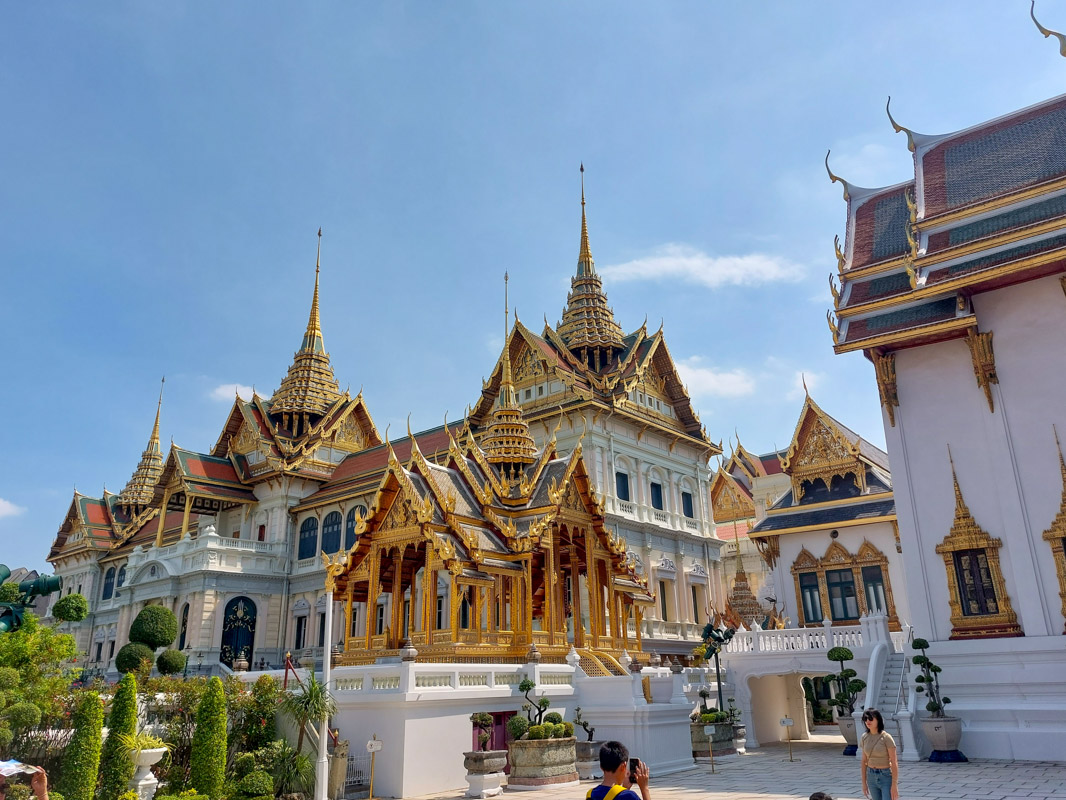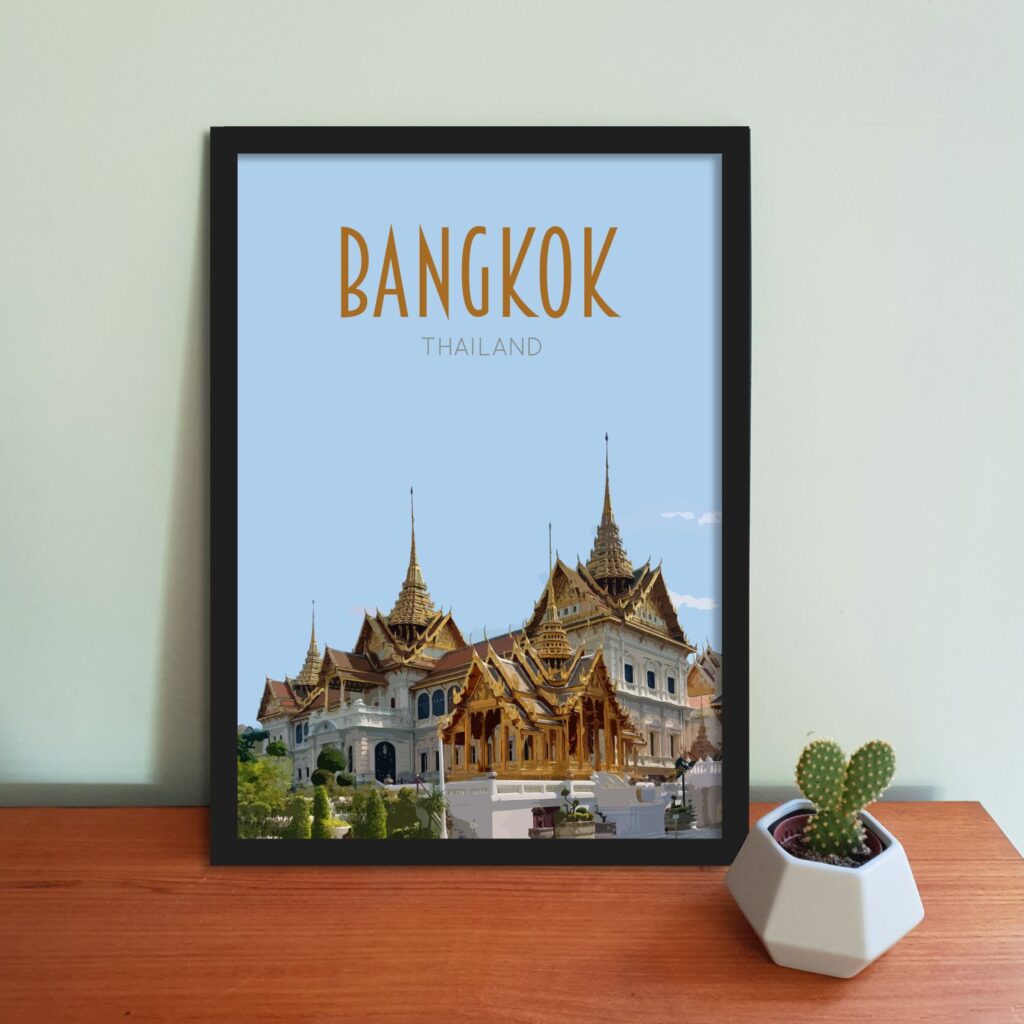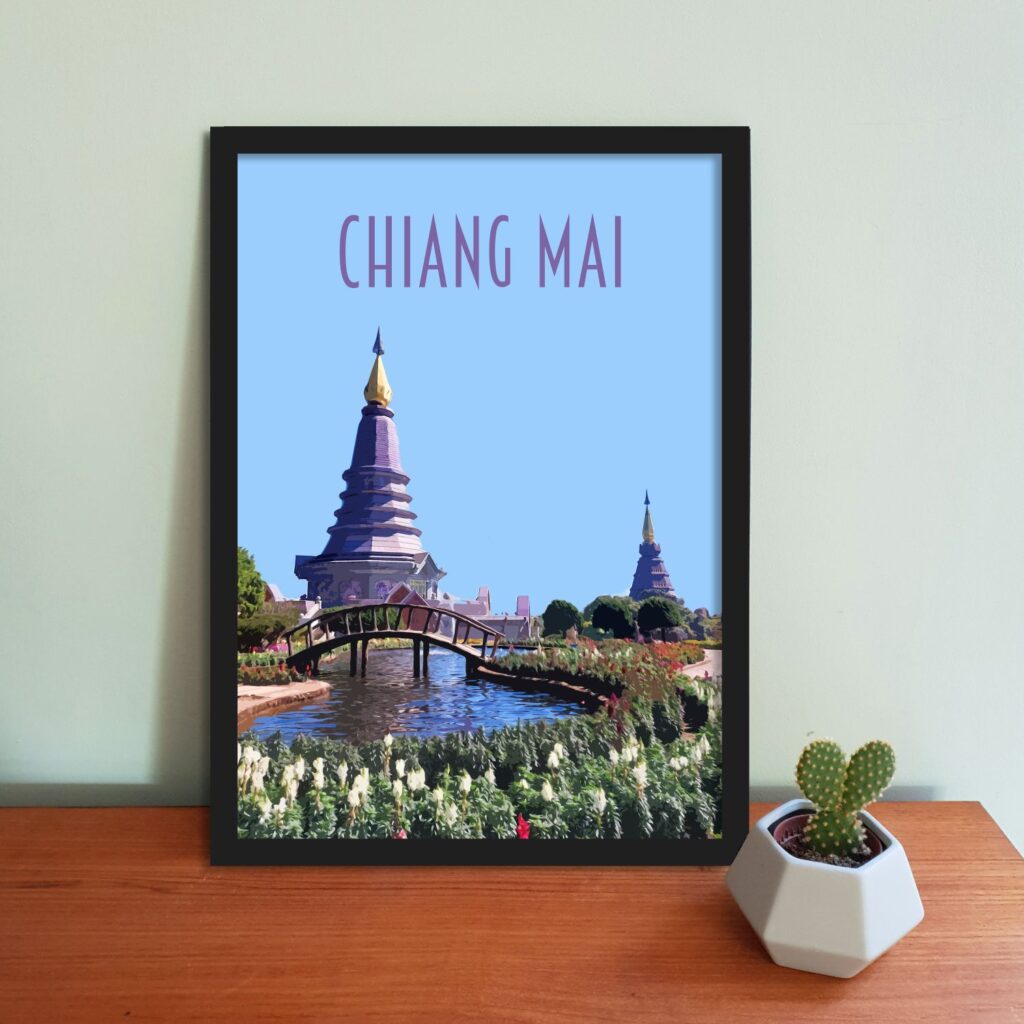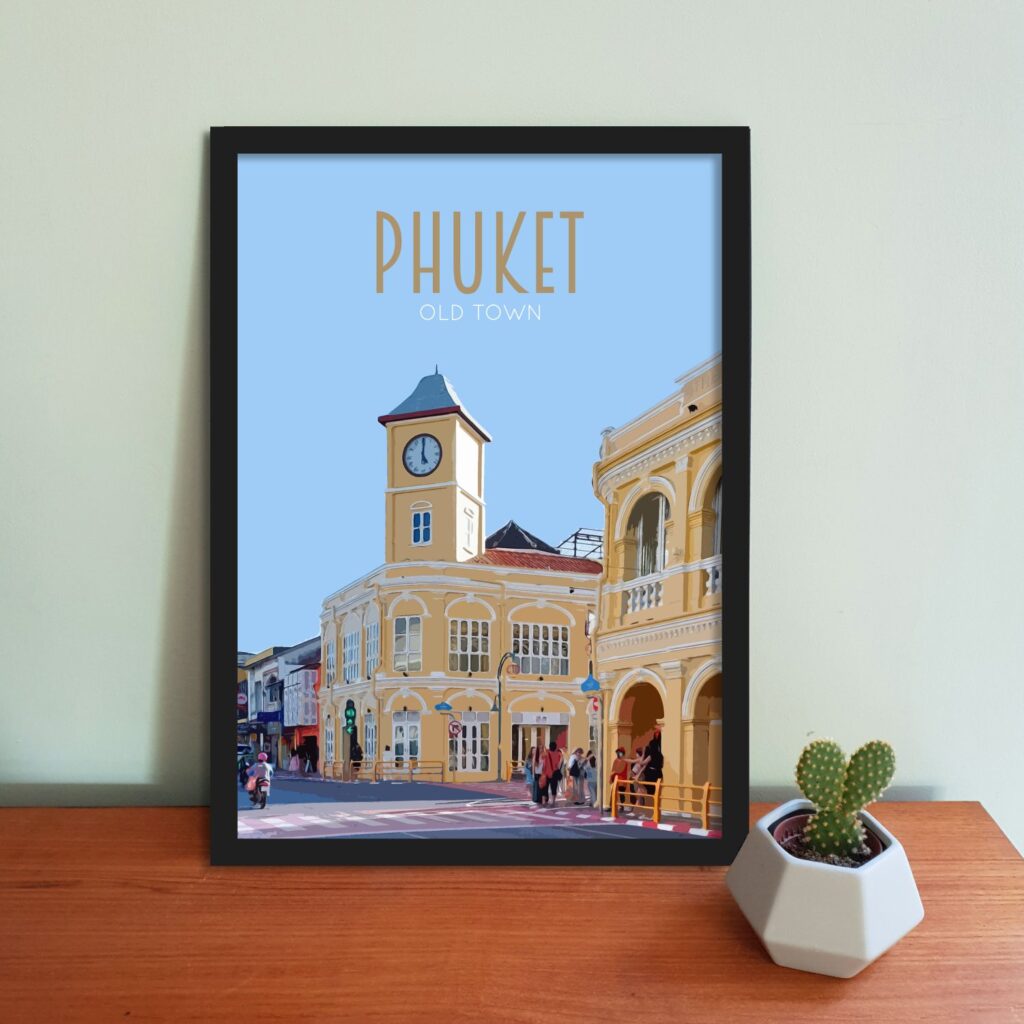Bangkok, Thailand is a city filled with decadent temples. It could take days to explore them all but here is a guide to Bangkok’s most famous temples that can be visited in a day or day and a half.
Leng Buia Ia Shrine in China Town
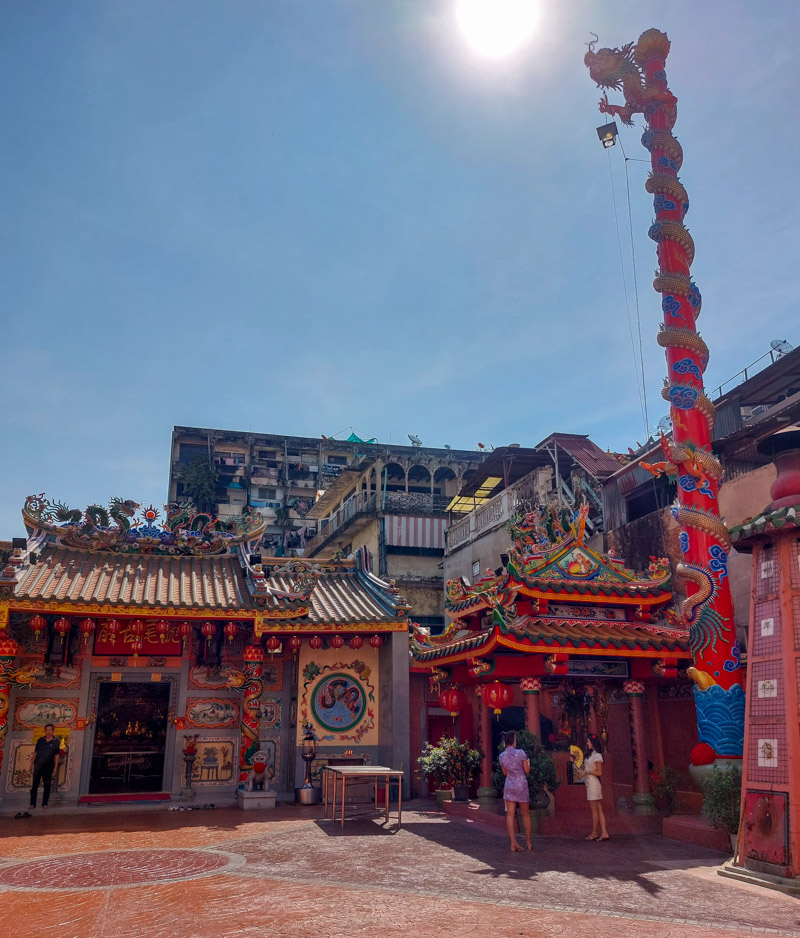
Located in the heart of China Town hidden down a busy market street, you’ll find Leng Buai Ia Shrine. This temple is often overlooked when recalling significant religious sites in Bangkok but it is a noteworthy one. Leng Buai Ia is thought to be the oldest Chinese Shrine in Thailand, dating back to 1658. The shrine is heavily decorated with colourful dragons and other traditional Chinese symbols. It is quite a contrast to the grand golden Buddhist temples of Bangkok.
From Leng Buai Ia Shrine, you can walk 10 minutes to our next stop, Wat Traimit Withayaram Worawihan.
Wat Traimit (Golden Buddha)
Wat Traimit houses the largest golden buddha in the world at 12 feet 5 inches in diameter (3.7m)and 15 ft 9 tall (5m). It weighs 5.5 tonnes and is valued at 28.5 million pounds. The buddha statue is over 700 years old. To hide the precious statue from enemies invading Thailand it was covered in plaster. This protective act was seemingly forgotten about. It was only in 1955 that it was discovered that under the plaster the statue was pure gold!
Entrance fee: 100 THB (approximately £2 or $3), rent a scarf for 20 THB.
To reach the next stop (Wat Pho), either walk 30 minutes or jump on the metro. If the latter, take the Blue Line from Hua Lamphong to Sanam Chai.
Wat Pho (Reclining Buddha)
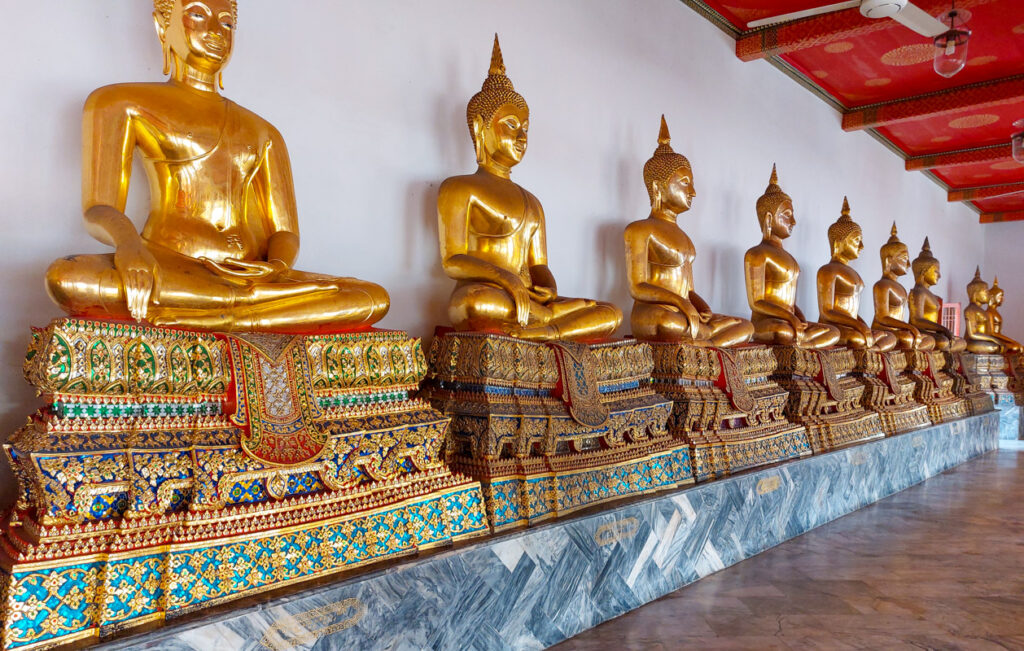
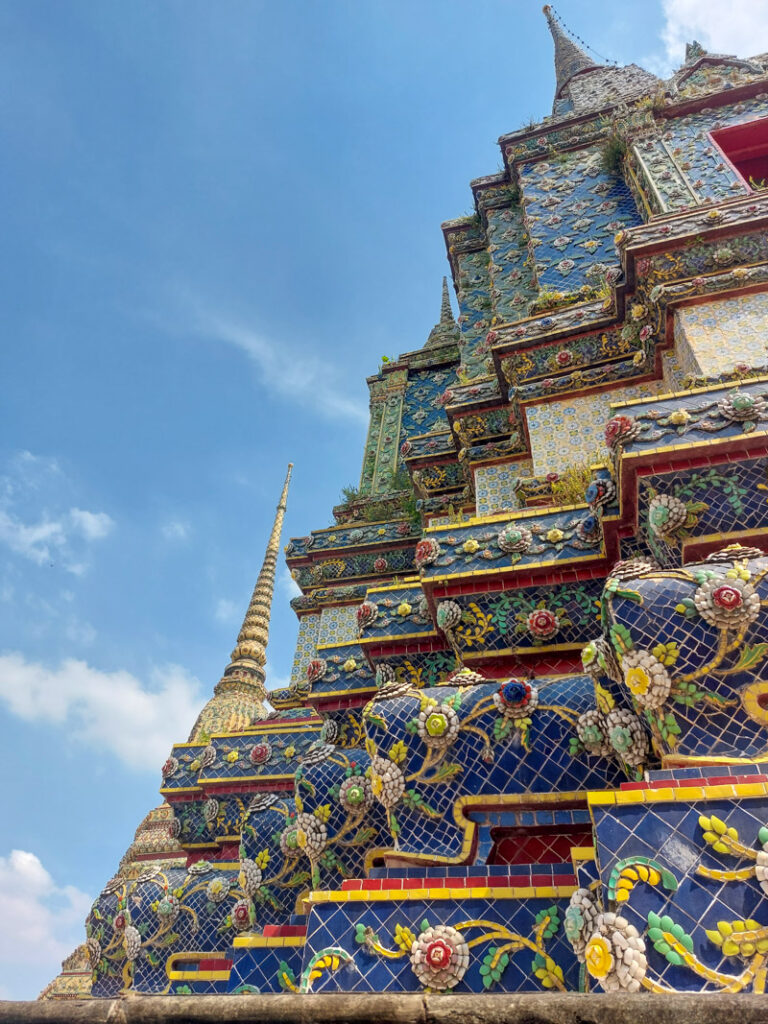
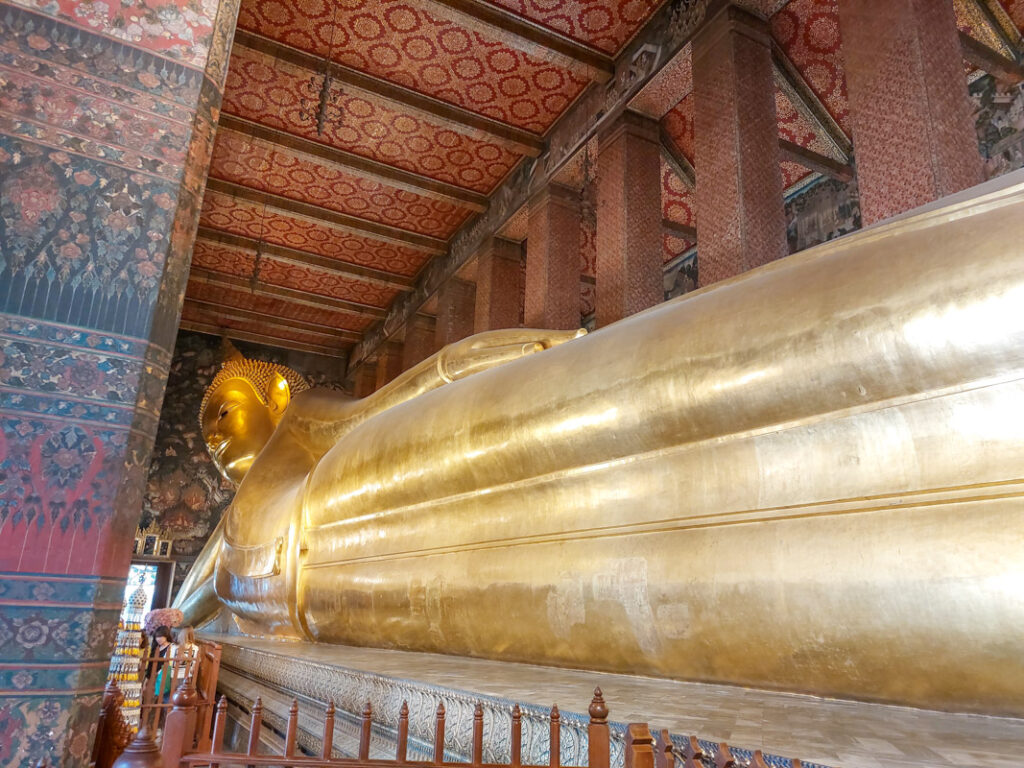
Wat Pho is home to the famous Reclining Buddha. The statue is a huge 15 metres (49 feet) long! It almost looks too big for the building that houses it and it’s very tricky to get a good photo of the full stretch of statue.
Although the Reclining Buddha is the centre piece, the temple has an expensive collection of Buddhas as well as highly decorated mosaic stupas.
Entrance fee: 200 THB (approximately £4 or $5), scarf provided free of charge, if needed.
To reach the next temple, Wat Arun, you will need to cross the river. This is easy to do, simply walk down to Rajinee ferry port. You will only need to pay 5 Baht per person to take the boat across the river. The journey is very quick and you’ll be dropped off right outside the Wat.
Wat Arun
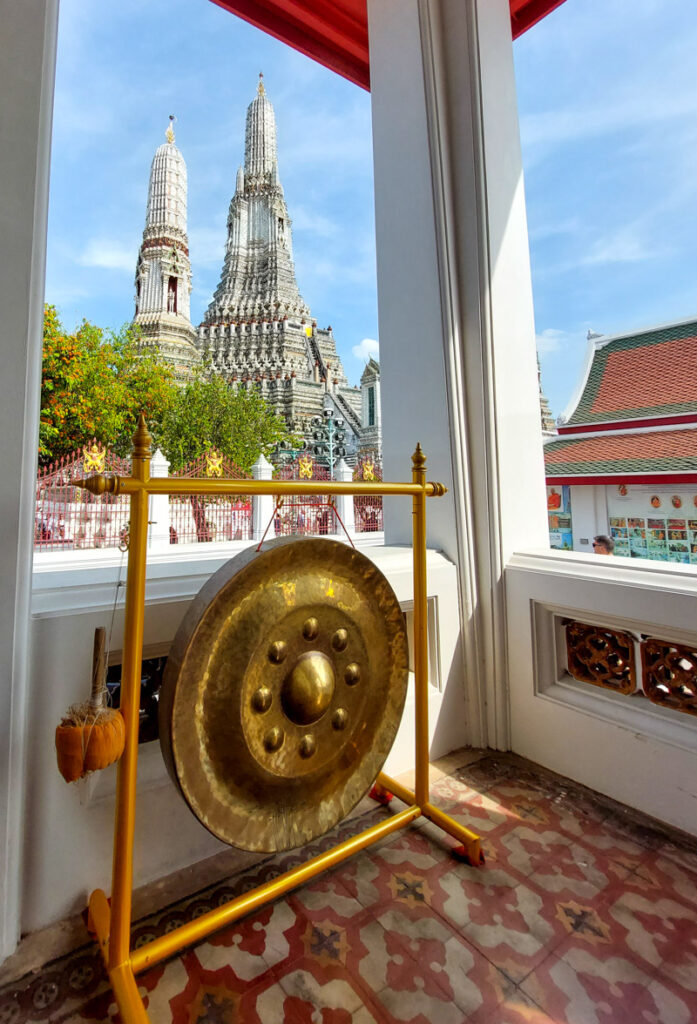
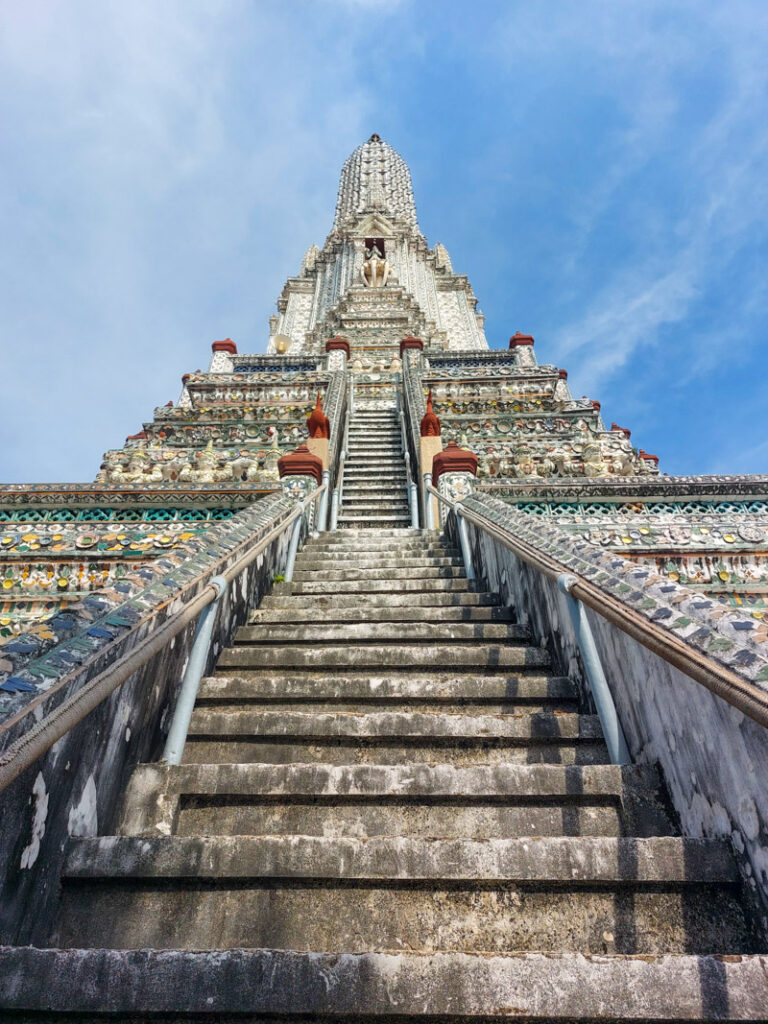
Wat Arun is home to an impressive collection of tiled, decorated stupas. The largest of which is climbable. Visitors aren’t allowed to walk all the way to the tip of the stupa but you can still go up a good distance for a view over the temple and Chao Phraya river.
Entrance fee: 100 THB (approximately £2 or $3), scarf provided free of charge, if needed.
The Grand Palace (Emerald Buddha)
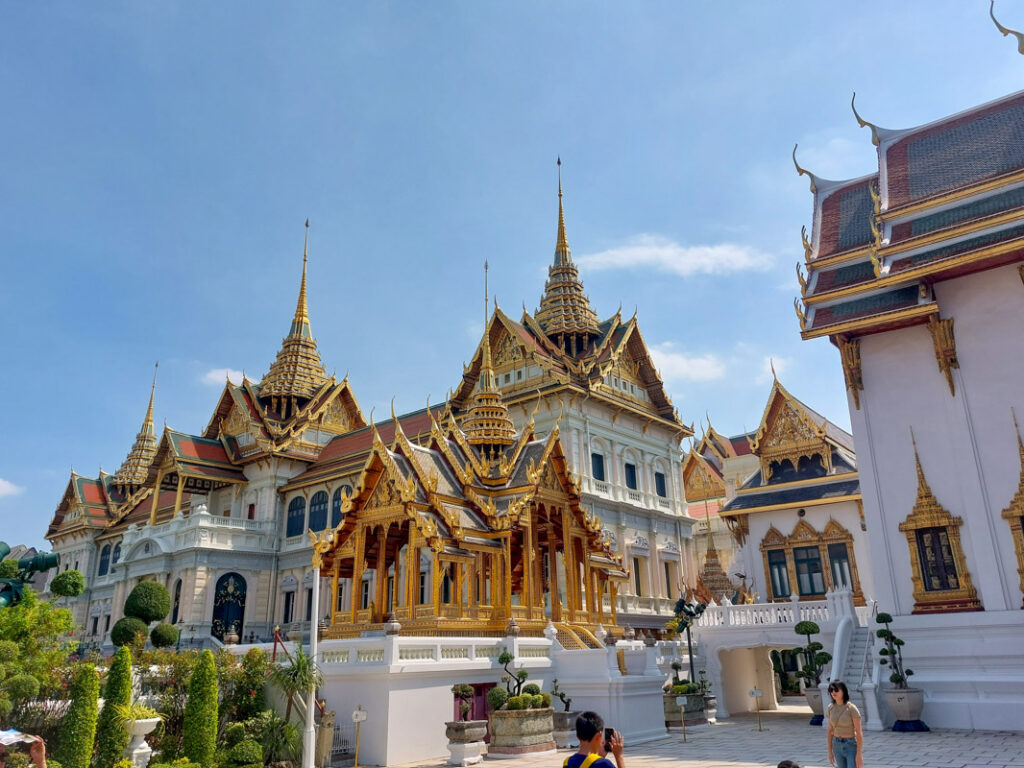
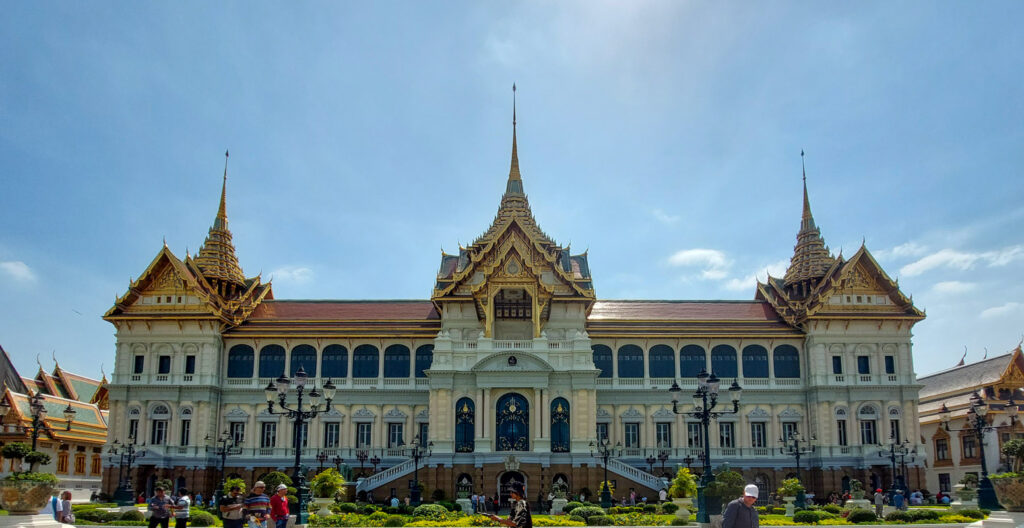
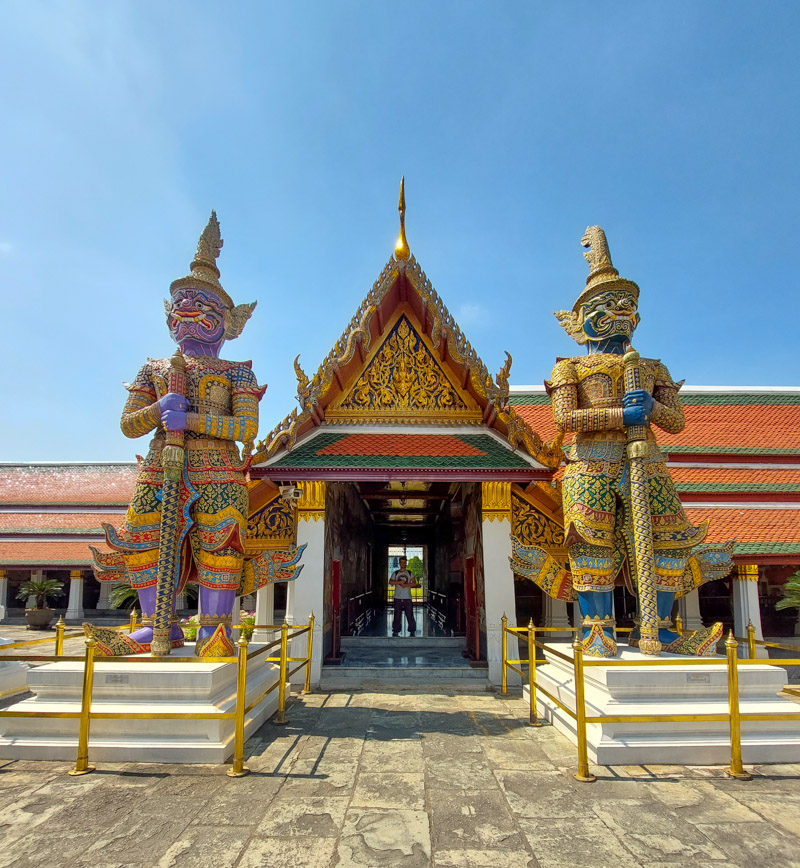
If you have a an hour or two before sunset, visit the Royal Palace next. If not, skip ahead to Wat Saket for sunset and visit the Royal Palace another day to give it enough time.
Established in 1783, the palace covers 218,000 square metres and 1900m of walls. The Grand Palace has been extended and revamped over the years with subsequent kings.
The star of the palace’s temple is the Emerald Buddha which has three different costumes; one for summer, one for the rainy season and one for winter. The buddha was discovered in 1464 and it was taken to Luang Prabang in 1552 by the King of Laos and Chiang Mai. It was then taken to Vientiane 12 years later and remained there until 1778 when it was taken to Wat Arun before being installed in the new palace. The buddha is carved from Jasper and is 66cm high.
The Palace is very strict on visitor’s clothing. You must cover your legs, even men, so wear trousers or a long skirt. If you don’t have anything with you, you can buy trousers there.
Entrance fee: 500 THB (approximately £11 or $14)
To reach Wat Saket from the Grand Palace, you will need to walk 25 minutes, mostly along Bamrung Mueng Road.
Wat Saket, the Golden Mount
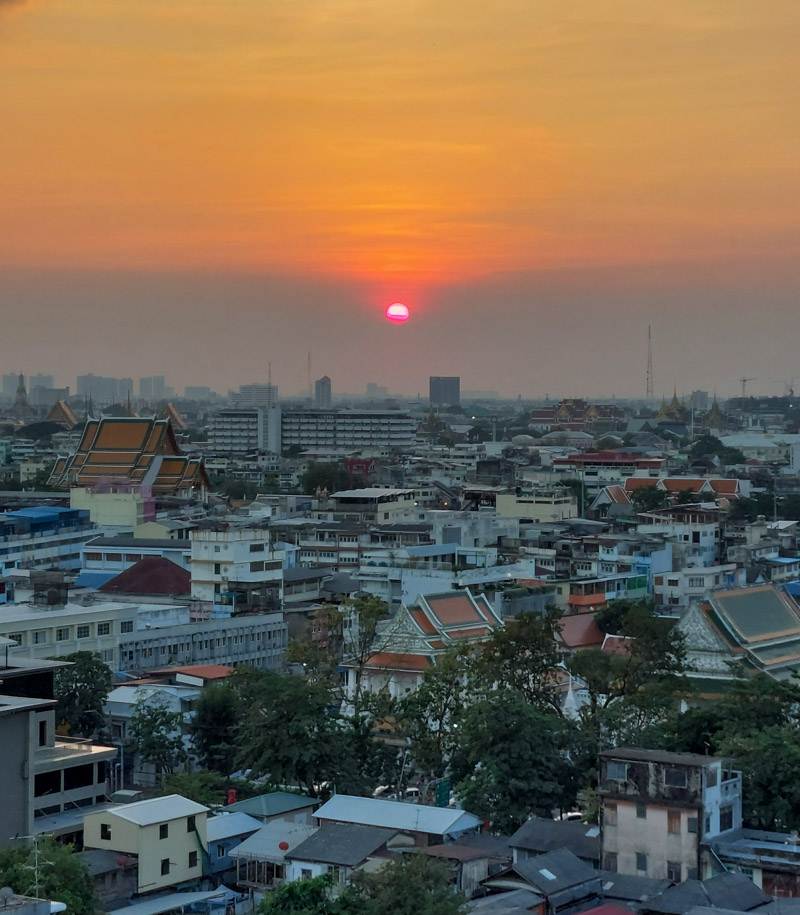
Wat Saket was build on high ground on what is now called the Golden Mount. I’d recommend climbing the stairs up to the temple in late afternoon, just before the sun goes down. From the roof terrace of the temple you can admire the golden stupa and also watch the sun set over Bangkok.
Entrance: 100 THB (approximately £2 or $3)
Thailand Travel Posters
More Travel Tips for Bangkok
Best time to visit Bangkok
Bangkok has fairly stable temperatures year round, averaging between 25 and 30 degrees C (77-86 Farenheit). November to February are the driest months with very low chances of rain. For pleasant weather I would recommend visiting Bangkok in the winter.
In terms of festivities, there will always be a lot going on in the city around Chinese New Year, particularly in Chinatown. The date of this varies each year but is usually around January-February. If you visit in November, you may get a chance to see the Royal Barge Precession which makes its way along the river to Wat Arun. Loy Krathong also falls in November. During this festivals locals gather at night to float candles along the waterways of Bangkok.
Other things to do in Bangkok
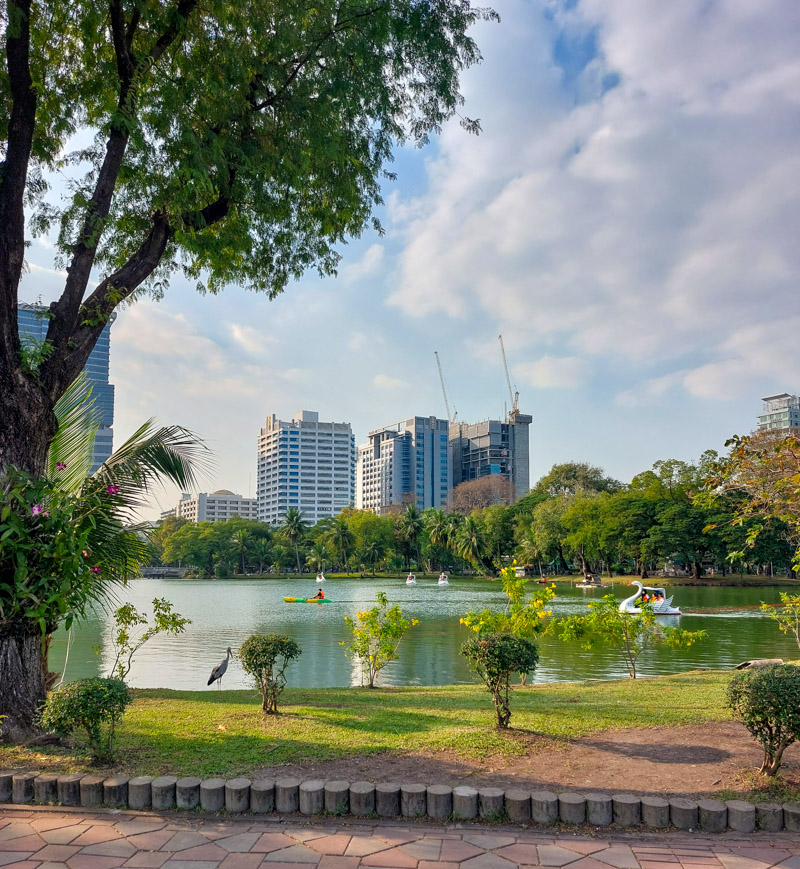
Bangkok is a lively city with lots to offer both tourists and locals. If you want to squeeze in another activity during the temple tour, visit the Amulet Market between Wat Arun and the Grand Palace. The market offers hundreds of small carved amulets said to offer luck and protection.
Another market worth seeing in Bangkok are the flower markets. Wander along Chakkrapet Road at night and see the whole street in bloom.
For a little escape from the city, visit Lumphini Park. You can stroll around the gardens, hire a peddle boat on the lake or just sit and relax. You might even spot a monitor lizard!
What to wear to temples in Bangkok
The temples of Bangkok are first and foremost religious sites, not tourist attractions so visitors are required to dress respectfully. Some temples are stricter than others, particularly for women. In general, you should have your legs and shoulders covered. If you wear shorts, some temples will offer you a skirt or scarf to cover up. Wat Pho and Wat Arun both provided skirts or scarves to borrow for free. Wat Traimit requires uncovered visitors to rent a scarf for 20 THB.

